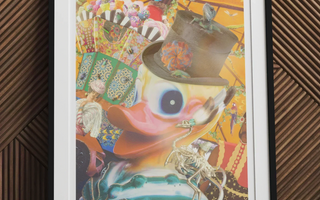Art + Design x Life
Secret Dog, Private Dock
Classical grandeur meets surreal introspection. Transporting you to a reimagined realm where Hercules waits for a ride in divine repose....
A Quick(ish) But Thorough Collage Definition for Art Nerds
Long before the word “collage” entered our vocabulary, distant civilizations already toyed with the concept of assembling fragments into coherent...
11 Famous Collage Artists Who Defined the Art Form
Collage art is more than an assemblage of cut-outs. It’s a radical reimagining of form, narrative, and meaning. And these...
Madame Firefly
Madame Firefly is a spirited reinterpretation of the Orientalist narratives in operas like "Madame Butterfly" and "The Mikado". A firework...
Hey Good Looking
The carousel becomes a symbol of childhood innocence. And with each revolution, we find a mirror of passing years. And...
Hanuman The Handyman
"Hanuman the Handyman" is a whirling carousel of narratives. A spectacle of divine acrobatics. Flinging the monkey god into the...
The Amazing Asma And Her Dashing Deer
Surrounding Asma, miniature deer dance in lockstep on the wing of a bright pink plane, symbolising femininity and the fleeting...
Second Homesick Pt 1
Bangkok isn’t just my second home. It IS home. As bright and hodge-podge as my bricolage memories of this special...





















